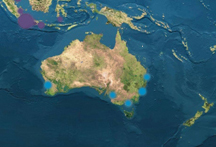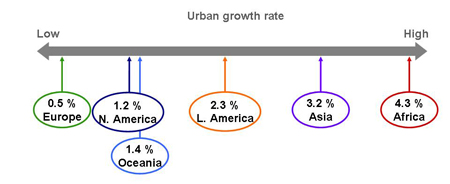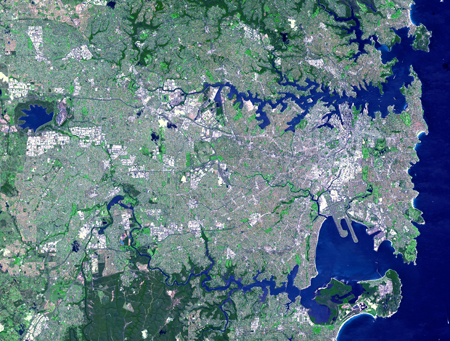2. Urbanisation
Oceania
Oceania includes the Pacific islands between Australia, the Philippines and America, between the Tropic of Cancer and 50° southern latitude. Sometimes, the islands of Oceania and Australia as a continent are known as Australia and Oceania. Oceania consists of a series of independent states and dependent areas, the biggest being Papua New Guinea, New Zealand & the Hawaiian Islands (Meyers Lexikon Online).

More than 7 500 islands make up a total land area of nearly 1.3 Mio. km² and are spread over a sea area of about 70 Mio. km². Roughly 2,100 islands are populated. Of the 16.5 Mio. inhabitants (2005), about 12.2 Mio. live on New Guinea and in New Zealand. In Oceania 75% of the people are living in cities (Gresh 2007, Meyers Lexikon Online).
Reasons for the migration into cities
With their centralised infrastructure, cities offer:
- better training and employment opportunities
- better health care
- better access to goods, water and electricity
- better access to international traffic junction
(Suedseetraeumereien)

Source: Own illustration, Blotevogel H H, 2003
The uncontrolled and unplanned growth of cities of over 1 million inhabitants and megacities in the countries of the periphery and semi-periphery is the biggest problem of global urbanisation (Blotevogel 2003).
Consequences
- Social, economic and urbanistic segregation of the cities
- Disintegration into various "urban worlds", which are falling apart more and more both in public perception and in the behaviour of the population as well as in the strategies of urban planning (Blotevogel 2003).
The situation of big cities in the so-called Third World is however not comparable to each other, as...
- the range of growth reaches completely different dimensions
- the urbanisation boom in most cases does not come along with industrialisation and corresponding job opportunities in the cities
- parts of the big cities belong to the modern sector and are integrated into the world economy (Blotevogel 2003)
Sydney
The major cities of Australia have a long history of competing with each other. This tradition has provided a foundation for the wider geographical competition of recent years. Sydney has now established itself as the leading Australian city. It is the major international air hub and the most important financial centre in the country. During the growth of Asian economies, it has extended its role to become a location for many transnational corporations wanting to serve Southeast Asia. The State of New South Wales undertakes the strategic planning of the Sydney metropolitan region. Based on the two natural harbour basins (Botany Bay in the South and Sydney Harbor in the North) the city grew continuously. Currently there are over 4 million people from over 100 countries living there (NASA Visible Earth, UN-HABITAT 2001).

Source: NASA ASTER
Tasks:
1. Describe the urbanisation process in Oceania.
2. What makes Sydney the main city in Australia?
